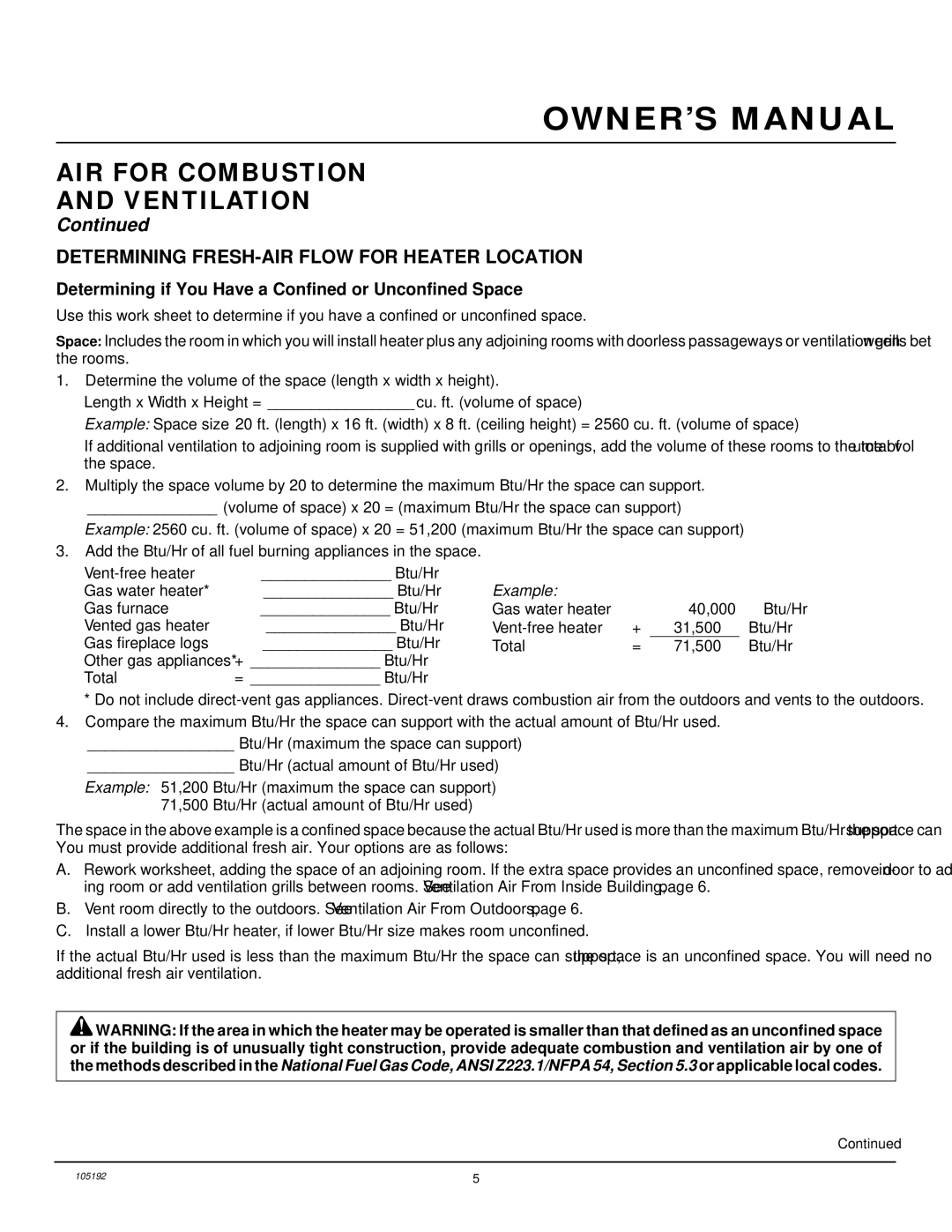FVF24P, FVF18P, FVF30P specifications
The FMI FVF series of fireplaces, which includes models FVF30P, FVF18P, and FVF24P, represents a blend of contemporary design and advanced heating technology. Each model is designed to provide efficient and aesthetic warmth to any space, making them ideal for modern homes and commercial settings.The FVF30P is the largest in the series, featuring a striking glass front that allows for an unobstructed view of the flames. Its generous heating capability makes it suitable for larger rooms, ensuring that warmth permeates every corner. Equipped with a powerful blower system, this model enhances heat distribution, making it an ideal choice for those seeking both efficiency and aesthetics.
The FVF18P, in contrast, is designed for smaller spaces, combining compact dimensions with impressive heating performance. Its sleek design allows it to fit seamlessly into any decor, while still providing the ambiance of a traditional fireplace. With advanced technology that ensures optimal combustion, this model minimizes emissions and maximizes efficiency, meeting stringent environmental standards.
The FVF24P stands as a middle ground between the two, offering versatile installation options and a balanced heating output. This model also boasts an elegant glass front that enhances visual appeal. Like its counterparts, the FVF24P incorporates modern technologies that ensure a clean burn, significantly reducing fuel consumption while maximizing output.
All models include advanced ignition systems, such as electronic ignition, making startup simple and convenient. Each unit is designed with ease of maintenance in mind, featuring removable panels and accessible components that simplify cleaning. Moreover, these fireplaces offer various finishes and trim options, allowing customization to match individual tastes and home designs.
Safety is another hallmark of the FMI FVF series. Each fireplace is equipped with safety features such as a tempered glass front, automatic shut-off systems, and optional heat management systems to prevent overheating. Customer satisfaction is further ensured through generous warranties and exceptional after-sale support provided by FMI.
In conclusion, the FMI FVF30P, FVF18P, and FVF24P models stand out in the market due to their combination of aesthetic appeal, cutting-edge technology, and commitment to efficiency and safety, making them an excellent investment for anyone looking to enhance their living space with modern warmth.

